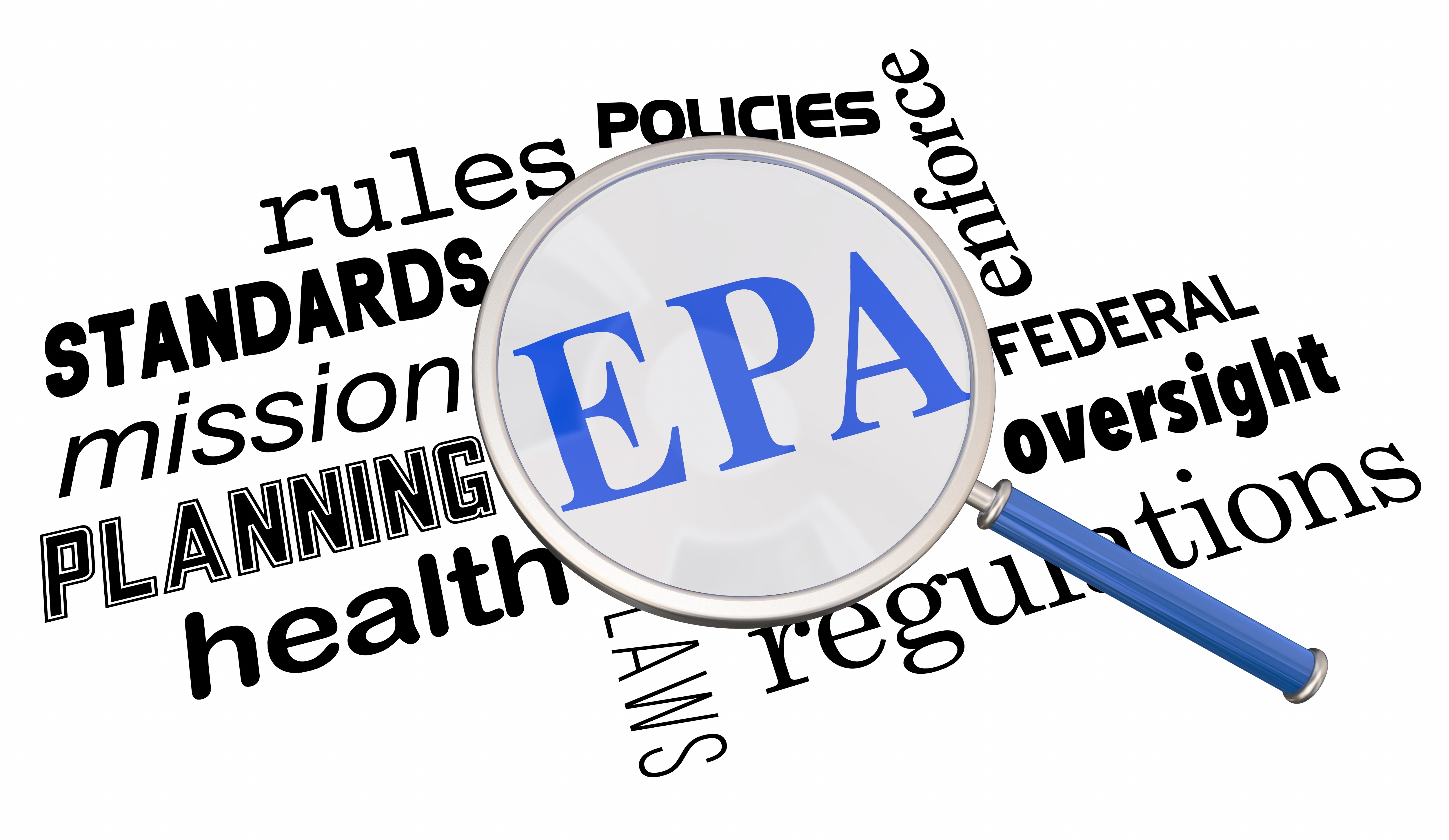This week, EPA Director Zeldin announced that the EPA would be rescinding the Greenhouse Gas Endangerment Finding. The Endangerment Finding states that certain gasses in the atmosphere pose an eminent risk to public health (carbon dioxide, methane, nitrous oxide, PFCs, HFCs, etc).
ESG & Industry Updates
EPA Announces intent to Rescind Greenhouse Gas Endangerment Finding
Posted by Kelly Burke on Aug 1, 2025 5:49:36 PM
Topics: EPA, methane, Carbon Emissions, HFCs, PFC, Trump Administration, Biden Administration, Inflation Reduction Act, ACT
Clean Air Act, CARB Waivers & ACT in question under new EPA
Posted by Kelly Burke on Mar 28, 2025 3:33:12 PM
Nationally, we are seeing a lot of change afoot on issues surrounding emissions and climate change, but at the state and regional levels we are largely seeing a continuation of standing policies. The following is a quick rundown of some of the news you may have been seeing about the attempt to overturn the Clean Air Act itself, or alternatively, to rescind EPA waivers in California - both of which could impact the Massachusetts’ Advanced Clean Trucks Rule, among other environmental policies.
Topics: EPA, Climate Change, clean air act, Trump Administration, Inflation Reduction Act, CARB, ACT
First - a reminder - Tariffs are (as of writing) still set to kick in this weekend on all imports from Mexico and Canada, and thus far they do not exempt oil imports from Canada, which could impact New England over the next several weeks, barring updates. We won't know what, if any, impacts there will be until early next week, most likely. Petitions are pending to exempt oil imports from the tariffs but there has not been any publicly confirmed change on that by the Administration as of Friday afternoon. Additionally, there are looming questions about price impacts on electricity in Northern New England that is Canadian sourced and whether that would be subject to the same 25% tariff.
Topics: EPA, Climate Change, tariff, Trump Administration, Biden Administration, paris accord, offshore wind, ev
CARB's Advanced Clean Truck Rule is Live in Massachusetts
Posted by Kelly Burke on Jan 3, 2025 3:34:30 PM
MassDEP adopted the CARB (California Air Resources Board) Heavy Duty Omnibus and Advanced Clean Truck Regulations (aka 310 CMR 7.40) December 2021, along with several other States. The bill took effect January 1, 2025.
Topics: EPA, Massachusetts, Carbon Emissions, net-zero, decarbonization, CARB, ZEV
Topics: EPA, agriculture, Clean Water Act
Topics: EPA, Carbon Emissions, railcar regulations, renewable energy, Biden Administration, decarbonization
Transportation Decarbonization: Off-Road Vehicles and Mobile Equipment
Posted by Kelly Burke on Feb 6, 2023 12:48:53 PM
As we have been discussing, the US National Blueprint for Transportation Decarbonization breaks the Transportation sector into seven categories, each of which has its own targets for emission reduction/elimination, and strategies for how those declines in emissions will be achieved. The next category addressed in the Blueprint by emissions % is Off-Road Vehicles and Mobile Equipment.
The Off-Road Vehicles and Mobil Equipment segment includes a LOT, from heavy mine drilling equipment and excavators to dirt bikes and lawn mowers. The off-road segment is accountable for approximately 10% of emissions, but where 79% of the segment uses diesel, the changes that would be applicable to the medium and heavy duty (on road) sector would carry over fairly cleanly to the off-road sector, which is why they make sense to address in tandem. We saw a similar approach to this with the transition to ultra low sulfur diesel – the initial priority was on road vehicles, as they are more uniform in fuel technology requirements and also contribute more on emissions. Once the tech is there for on-road, its fairly simple to adopt it down into the off-road sector for diesel fueled equipment.
Topics: EPA, Carbon Emissions, Biden Administration, decarbonization
Transportation Decarbonization: Medium & Heavy Duty Vehicles
Posted by Kelly Burke on Jan 30, 2023 1:07:12 PM
As we have been discussing, the US National Blueprint for Transportation Decarbonization breaks the Transportation sector into seven categories, each of which has its own targets for emission reduction/elimination, and strategies for how those declines in emissions will be achieved. The second segment by emission % is Medium- and Heavy-Duty Vehicles.
Topics: EPA, Carbon Emissions, Emissions, Biden Administration, paris accord, decarbonization
Transportation DeCarbonization Blueprint: Light Duty Vehicles
Posted by Kelly Burke on Jan 20, 2023 10:41:32 AM
The US National Blueprint for Transportation Decarbonization splits the Transportation sector into seven categories of focus: Light-Duty Vehicles, Medium- and Heavy-Duty Vehicles, Off-Road, Rail, Maritime, Aviation, and Pipelines. We will discuss the major items involved in each of these, from largest % of carbon share to least, starting with Light Duty Vehicles.
Light-Duty Vehicles produce 49% of current transportation emissions (of note, for the purposes of the Blueprint “current” refers to 2019 levels due to the pandemic and related shutdowns making 2020 & 2021 data unreliable/useless).
Topics: EV Charger, EPA, Carbon Emissions, Emissions, Biden Administration, ev, DOT, decarbonization
Biden Admin Releases US Blueprint for Transportation Decarbonization
Posted by Kelly Burke on Jan 13, 2023 8:09:33 AM
January 10th, 2023 the Biden Administration released the US National Blueprint for Transportation Decarbonization.
Topics: EPA, Climate Change, Carbon Emissions, DOT, decarbonization
Subscribe to Email Updates
Recent Posts
Posts by Topic
- Carbon Emissions (42)
- Climate Change (32)
- renewable energy (31)
- Oil & Energy Magazine (27)
- EPA (24)
- Massachusetts (21)
- Biden Administration (18)
- decarbonization (15)
- Biodiesel (12)
- natural gas (12)
- EPA Mandate (11)
- RFS (11)
- Solar (11)
- Biofuels (10)
- Keystone XL (10)
- methane (10)
- Clean Energy (9)
- offshore wind (9)
- Energy Independence (8)
- Energy Infrastructure (8)
- Safety (8)
- Biodiesel Tax Credit (7)
- Emissions (7)
- Ethanol (7)
- ev (7)
- Cellulosic Ethanol (6)
- EV Charger (6)
- RINs (6)
- Trump Administration (6)
- environmental justice (6)
- Fracking (5)
- Inflation Reduction Act (5)
- Technology (5)
- US Crude Exports (5)
- Utility Rates (5)
- electric vehicles (5)
- maine (5)
- tesla (5)
- ACT (4)
- Mass DOER (4)
- TransCanada (4)
- battery (4)
- fuel management (4)
- massachusetts biodiesel mandate (4)
- obama (4)
- paris accord (4)
- remote tank monitoring (4)
- CARB (3)
- CRUDE (3)
- Carbon Capture (3)
- Clean Fuel Production Credit (3)
- E85 (3)
- Emergency Fuel (3)
- Massachusetts Clean Cities (3)
- Waste Feedstock Biodiesel (3)
- china (3)
- clean power plan (3)
- electricity rates (3)
- net-zero (3)
- renewable diesel (3)
- solid state battery (3)
- AI (2)
- AVs (2)
- Bioheat (2)
- Commodities (2)
- Congress (2)
- Customer Service (2)
- DOT (2)
- EIA (2)
- Emergency Generator Program (2)
- HFCs (2)
- Hurricane Sandy (2)
- IMO 2020 (2)
- MIT (2)
- Marinas (2)
- New York (2)
- Refinery Closures (2)
- Safe Driving Policy (2)
- TCI (2)
- US Energy Boom (2)
- ZEV (2)
- autonomous vehicles (2)
- clean air act (2)
- coal (2)
- driver shortage (2)
- emergency response (2)
- environment (2)
- ferc (2)
- geothermal (2)
- hydro-electric (2)
- hydrogen (2)
- national grid (2)
- net metering (2)
- power plant emissions (2)
- power plants (2)
- railcar regulations (2)
- tariff (2)
- vineyard wind (2)
- API (1)
- Air conditioning (1)
- Baiji Refinery (1)
- Blend Wall (1)
- Brent Crude (1)
- Brent vs WTI (1)
- CFCs (1)
- Cell Phone Policy (1)
- Clean Water Act (1)
- DEF (1)
- Election Results (1)
- Electrical Grid (1)
- Energy Efficiency (1)
- Environmental Impact Study (1)
- Environmentally Friendly Products (1)
- Ethanol Tax Credit (1)
- FEMA (1)
- Fiscal Cliff (1)
- Gas Tax (1)
- Gasoline Supply Crunch (1)
- HDVC (1)
- Hazmat (1)
- Heat Tax (1)
- Highway Trust Fund (1)
- Holyoke (1)
- Hybrid (1)
- ISIS (1)
- Iraq (1)
- Kigali Amendment (1)
- MOC (1)
- Market analysis (1)
- Mayflower (1)
- Montreal Protocol (1)
- NORA (1)
- Natural Gas Pipeline Explosion (1)
- New Jersey (1)
- Oil Barrel Tax (1)
- PFC (1)
- Pegasus Pipeline (1)
- Propane Autogas (1)
- Stimulus (1)
- Syria (1)
- Tank Truck Safety Training (1)
- Tax Increases (1)
- Tier 3 Gasoline Standard (1)
- Times Square (1)
- VEEP (1)
- Workplace Risk (1)
- agriculture (1)
- algonquin pipeline (1)
- alternative energy (1)
- altwheels (1)
- astm (1)
- bionic leaf (1)
- bitcoin (1)
- boston (1)
- clean heat standard (1)
- covid-19 (1)
- energy storage (1)
- eversource (1)
- export ban (1)
- fixed pricing (1)
- fuel (1)
- fuel efficiency (1)
- fuel marketers news (1)
- gas leaks (1)
- heating oil (1)
- hurricane harvey (1)
- inflation (1)
- irving oil (1)
- marketing (1)
- nuclear (1)
- online fuel buying (1)
- ozone (1)
- photovoltaic (1)
- pilot program (1)
- pipeline (1)
- propane (1)
- renewable natural gas (1)
- rggi (1)
- russia (1)
- sanctions (1)
- senate (1)
- shale (1)
- social media (1)
- social media for business (1)
- space (1)
- tablets (1)
- tennessee pipeline (1)
- ukraine, (1)
- value added services (1)






